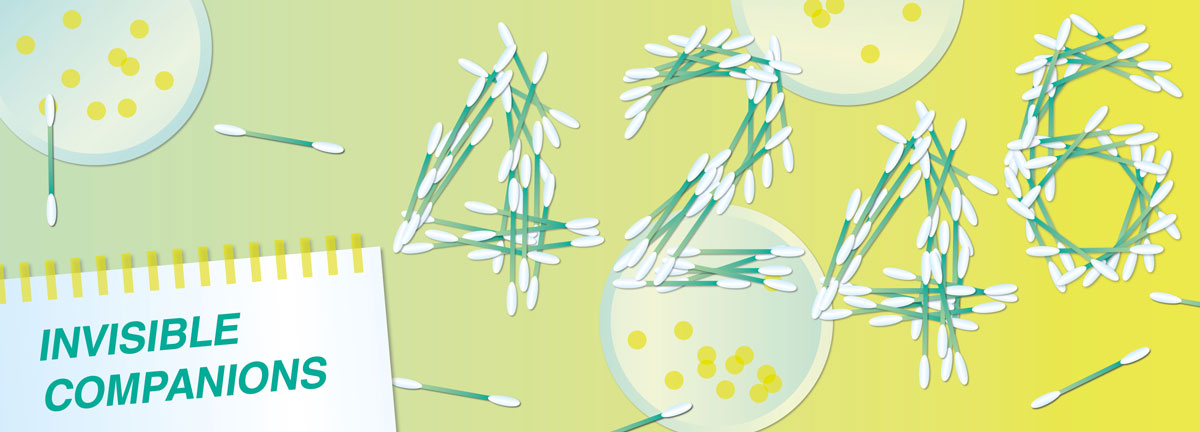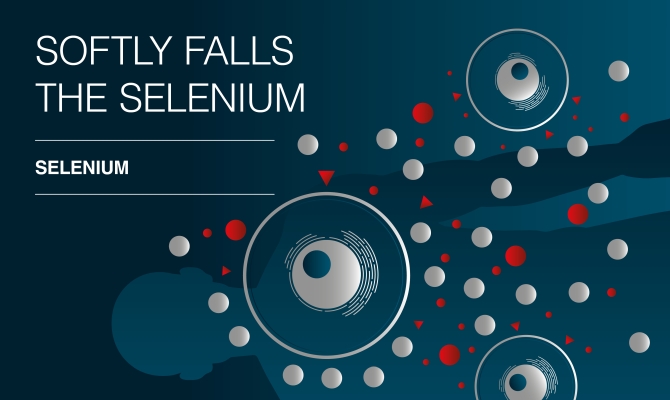
Public microbiome – invisible companions
Subway station crime scene: when volunteers are out and about with sterile swabs in over 60 cities on 21st June every year, they are preserving evidence in a special way.
The international research project MetaSUB (Metagenomics and Metadesign of Subways and Urban Biomes) has set itself the task of analysing microbial diversity in cities across the world. Using state-of-the-art genetic analysis methods, a research team is working step by step on a global microbial mapping of large cities. The aim is to better understand the “microbial fingerprint” of a city, discover new micro-organisms and observe them in order to set the course for the public health of tomorrow.
A wide variety of microbes characterise the urban microbiome
Grand Central Terminal in New York is a prime example of a public, highly frequented location – and therefore ideally qualified as a setting for the MetaSUB research project. At this subway station, there is a whole world of its own that is invisible to the human eye: microbes live everywhere – on door handles, on control grids, on vending machine displays, stair railings and on the floor.
microbes live everywhere – on door handles, on control grids, on vending machine displays, stair railings and on the floor.
Bacteria, viruses, fungi or protozoa from the environment, plants, animals and humans are transferred to surfaces via contact sources.
This special research project, in which scientists and inquisitive volunteers work together, is all about the holistic investigation of all microbes – the microbiome of a selected location.
Out of scientific curiosity. For public health.
MetaSUB is a research project initiated by Dr Christopher Mason in New York in 2015. The MetaSUB consortium, which has grown internationally, takes surface samples from urban environments with the support of many volunteers and then analyses them in the laboratory.
For a great reason: the urban micro-world is still largely unexplored. It plays a decisive role in public health and also influences the structural, climatic and infrastructural future of a city.
Microbes say a lot about how a city works. They reflect environmental and hygiene standards, human behaviour and even the way a city is built. Depending on their nature, they can be harmless, beneficial or pathogenic.
Metagenomics and bioinformatics bring light into the darkness
Over the years, the MetaSUB research team has systematically recorded, processed and determined a total of over 4700 samples (as of 2022).
Through metagenomic analyses in the laboratory, the scientists succeeded, among other things, in extracting the entire DNA of all micro-organisms, analysing it in pieces using high-throughput sequencers and creating a DNA database.
The data obtained was then further processed using bioinformatics methods. A special algorithm divided the DNA sequences, which are around 500 bases long, into smaller sections of 31 bases. These were then compared with known gene databases. In this way, the scientific team was able to discover previously unknown micro-organisms, identify potential resistance genes and make systematic comparisons between the samples.
Each city has its own unique microbial fingerprint
The analyses of the MetaSUB project have shown that each city has a unique fingerprint due to its microbial composition.
Despite the individual microbial profiles, a core of 31 microbial species has emerged that can be found in 97% of all the cities analysed.
In addition, the researchers were able to discover over 11,000 previously unknown virus strains and more than 1300 new bacterial species in the approximately 4700 surface samples.
Particularly relevant for public health: the MetaSUB team also found genes for antibiotic resistance in many of the samples. At the same time, however, they also discovered that many bacteria are absolutely harmless or even beneficial for urban health and urban development.
An urban microbiome is both a magnifying glass and a crystal ball
The research as part of the MetaSUB project shows that an urban microbiome provides valuable information about the health, structure and development of a city.
At best, health risks such as antibiotic-resistant germs or areas of attack for hygienic or infrastructural problems in an urban community can be detected at an early stage. In the worst case, the microbiome shows where pathogens have already spread unnoticed.
The conclusion: analysing and monitoring the urban microbiome has the potential to make a decisive contribution to future urban planning, drug research and the early detection of potential epidemics.
We also supply the right equipment for your application: Carl ROTH equips you with tools for research and laboratory work. Please visit our online shop: www.carlroth.com
Sources:
https://www.laborjournal.de/rubric/special/special/2022_04_02.php
https://magazin.fh-campuswien.ac.at/artikel/weltweit-in-der-u-bahn-erwischt.html
https://www.scinexx.de/news/biowissen/stadt-mikroben-einzigartig-wie-ein-fingerabdruck


